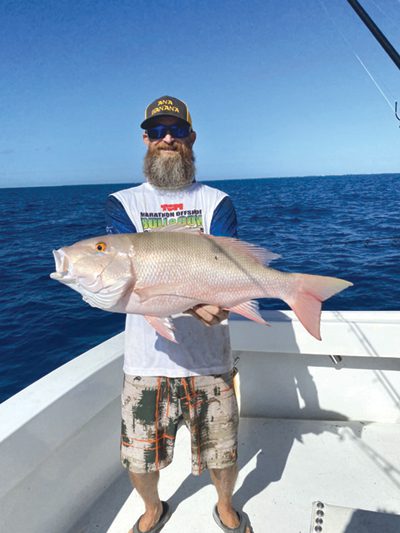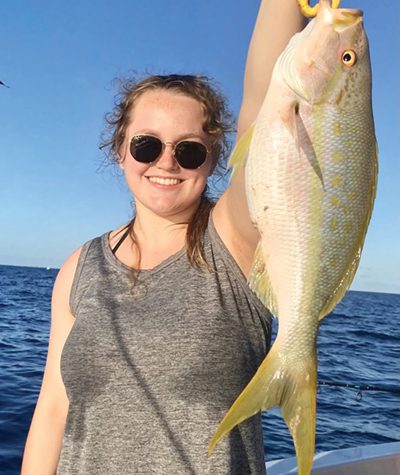By: Capt. Joel Brandenburg
It stretches 221 miles from Key Biscayne to the Dry Tortugas down the barrier of our Atlantic shorelines off the Florida Keys is not only the world’s largest living reef, it’s North America’s only living reef.

We have great respect for our living reef. We use a reef anchor that trips while being pulled up so as not to damage the reef below. We use biodegradable hooks and almost always stop and pick up any trash floating over our reef. The fishing experience on the Florida Keys reef is second to none. You could fish the reef successfully for 30 straight days and not use the same technique twice.

We like to chum by placing a chum block in a chum ring bag off the back of the boat. We also thaw a chum block in a 5-gallon buck and mix in fish oil, anise oil, white beach sand, salt water and oats. We mix it into a thick mud like clay. We send our baits down hidden in these clay balls that we mold with our hands. As the clay ball descends it breaks apart and also gets picked apart by fish on the way down and the only thing left is our bait with a hook in it. Some other tricks of the trade we use to fool the yellowtail into eating our bait is line 12 lb. to 15 lb. mono fluorocarbon leader about 3ft long.
We also use chartreuse weighted larve hooks. Weighted enough to go with the flow, but not heavy enough to sink straight down. We use a technique called flat lining. Flat lining is deploying the line out of your rod n reel at the same rate and speed as the current. The goal with flat lining is to make your bait look and flow like a piece of chum coming out of your chum bag.
Your peeling line off of the reel by hand, when the line starts peeling off the reel faster than the current, you’ve got a fish. Flip your bail, reel down on the fish and set your hook. Keep your rod tip up, no slack and get the yellowtail in quickly, but with finesse to keep the sharks from eating your fish. Sharks will turn their nose up on many species of fish, but they consider a yellowtail a delicacy too.
Best bait for yellowtail is sliced squid, whole pilchards, ballyhoo slivers, glass minnows, chunks of shrimp, pieces of bonita belly and my all-time favorite is the mullet gizzards that can be picked out of your Green Tournament Chum block.
On our reef we also target mutton snapper, lane snapper, red grouper, goliath grouper, gag grouper, black grouper, amber jack, yellow jack, jack crevalle, spanish mackerel, cero mackerel, king mackerel, wahoo, tuna, bonita, barracuda, shark, tarpon, sailfish and several other species. Some of the best lobster diving too.
Come check out the Florida Keys coral reef and I promise you’ll be amazed by its beauty and abundance of life.
— For a charter with Ana Banana Fishing Company Marathon
Florida Keys call 813-267-4401 cell, 305-395-4211 office, or email us at
marathonkeyfishingcharters@gmail.com You can also visit us in person at Ana Banana Marina at 12699 Overseas Highway Marathon Florida Keys or Captain Joel Brandenburg 570 Sombrero Beach Rd Marathon FL 33050
